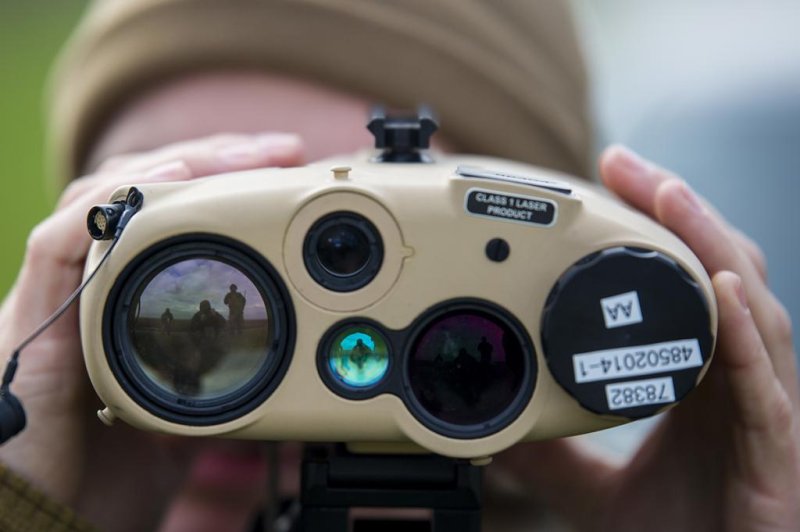A U.S. Marine with Special Purpose Marine Air-Ground Task Force-Crisis Response-Africa uses a Common Laser Range Finder-Integrated Capability system to locate targets on February 20. Photo by Sgt. Katelyn Hunter/U.S. Marines
April 25 (UPI) -- The U.S. Marine Corps plans to field a new version of an existing handheld GPS targeting system later this year, the military branch announced on Thursday.
New technologies are being integrated into an updated Common Laser Range Finder-Integrated Capability by the Marines -- including changes to reduce time and movement required for use of the system, as well as increased communications abilities -- ahead of its expected fielding.
The original CLRF-IC was fielded in 2012 and updated in 2017. The Marine Corps Systems Command's Ground Combat Element Systems then wanted to integrate an enhanced digital magnetic capability into the device.
In January 2018, German-based Kollsman received a $15.9 million contract for the systems and objective lens covers. Elbit is the U.S. subsidiary of the company.
The configuration change will reduce the time and movement required by Marines when using the system, which uses an eye-safe laser range finder and algorithms to determine a target's location, according to the Marine Corps. The location is then transmitted to the advanced field artillery tactical data system or another fire support system.
"Previously, the magnetic effects of an environment would cause the operator to go through a series of sitting and standing, stepping to the left and to the right in order to calibrate the system," Jeff Nebel, MCSC's Fire Support Coordination team lead, said in a news release. "What we're integrating is a new digital magnetic compass so the operator can calibrate the system basically the same way you do your cellphone -- just rotate it left to right, and up and down a few times."'
In addition, the new system will have the capability to export video or still-pictures from the CLRF-IC to a target handoff system. This will allow Marines to transmit photographs of targets to Marine Corps headquarters in helping identify enemies.
The system transmits information faster than the original version, and it features day and night cameras, a rangefinder and celestial positioning precision so Marines can use the system in various weather conditions.
MCSC put the device's technical and operator manuals on an application for electronic access, so Marines don't need to carry printed manuals in the field.
Marines performed an in-production ECP, and will begin fielding the enhanced CLRF-IC system in the next couple of months, Nebel said.
Nebel projects the system will reach full operational capability by early 2021.
"We took a short pause from our fielding so we could incorporate the in-production ECP, and that pushed back our FOC," Nebel said. "But now we're going to be able to get a more capable system out to Marines."
The first system incorporated the common laser range finder and a thermal laser spot imager.
In 2015, the Marines awarded Kollmans a $73.4 million contract for delivery of the updated system.
The 2017 binocular-like system weighs in at 3 pounds, compared with 12 pounds for the first one.
The new Marines system has had reviews in testing, including the light weight, Nebel said.
"If you're subtracting weight in one place, that means Marines can carry extra gear that previously would have overburdened them," Paul Knight, lead systems engineer for the system, said. "The CLRF-IC reduces that weight significantly."















